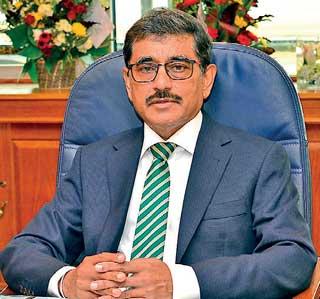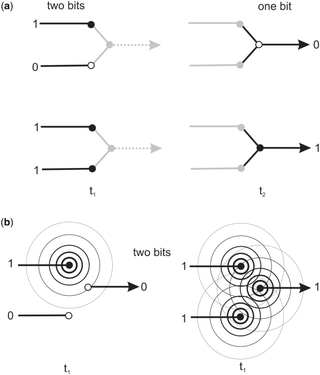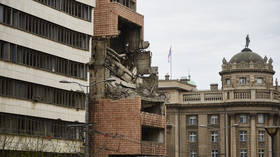Viewpoint by Darini Rajasingham-Senanayake
The writer, Dr Darini Rajasingham-Senanayake, is a Sociocultural and Medical Anthropologist based in Colombo. Her latest publication is ‘Multi-religiosity on Contemporary Sri Lanka: Innovation, Shared Spaces, Contestation”. (Routledge 2022)
South Asia’s Arab Spring is here, amid global Cold War tensions and slow tectonic shifts in power and wealth east, to Asia and the Indian Ocean Region, hastened and heightened by the Russia-Ukraine conflict.
As Foreign Minister of Russia, Sergey Lavrov, met Indian Prime Minister Narendra Modi on April 1, western pressure mounted with almost simultaneous visits from various British, European and US emissaries who cautioned and questioned Delhi’s historic and close ties with Moscow.
Simultaneously, Pakistani Prime Minister Imran Khan, who had visited Russia on a pre-planned trip a few weeks earlier, was subject to a “no confidence” motion which was later deflected with the dissolution of Parliament. Khan pointed the finger at the United States as the foreign power behind events in Islamabad and a Regime Change operation by buying politicians and political parties.
Prime Minister Khan showed material evidence of the ‘foreign conspiracy’ and named Assistant Secretary of State for south and central Asian affairs Donald Lu. A letter from Washington dated one day before the No Confidence was stated, “Pakistan would be forgiven if Imran Khan lost the No Confidence motion!” Washington had foreknowledge of events in Islamabad.
Ironically, Prime Minister Khan, who saved Pakistan’s economy from the economic destruction that almost two years of WHO-recommended Covid-19 lockdowns caused in Sri Lanka and India and protected the Pakistani people and economy by refusing to lockdown Pakistanis, stating that the resulting poverty would kill more people than the lab-made virus, has been accused of economic miss-management even though he was proved right.
The World Bank has lauded Prime Minister Khan’s handling of the Covid’ Panicdemic’ in Pakistan. Imran Khan’s friendship with China and the recent visit to Moscow and Mr Putin, he noted, had irked Washington and was the reason that Pakistan was targeted. Washington, however, has been much softer on its Indian Quadrilateral Group QUAD partner’s friendship with Russia. This time, India and Pakistan seemed to be on the same page vis-à-vis Russia! Indeed, there may be a new Asian confluence with China, India and Pakistan all refusing to follow NATO condemnation of Moscow following the NATO debacle in Afghanistan last year.
Staged dollar crisis and protests in Sri Lanka
The same week that Pakistan’s Imran Khan faced a No-Confidence motion, Sri Lanka saw an Arab Spring style’ colour revolution’ unfold with protests against former US citizen President Gotabaya and the Rajapaksa brothers’ regime, given the soaring cost of living, fuel and food shortages due to a much-hyped dollar shortage in the country and downgrades by rating agencies.
A few weeks earlier, the Sri Lankan rupee was crashed, having lost 70 per cent of its value in a year—a precursor to an International Monitory Fund (IMF), “bailout” or is it “bail-in” negotiations in Washington DC? Although Sri Lanka is one of South Asia’s wealthier countries with high social and Human development indicators in REAL TERMS, a fuel and electricity crisis materialized after the rupee crash. There were long queues at petrol sheds and gas shops.
But the strategic island’s crisis may be more about Geopolitics and less about Economics. Since 2019 staged Easter Sunday attacks on Tourist hotels and the economy using religion as a smokescreen and the island’s rejection of America’s Millennium Challenge Corporation (MCC) Compact, this strategically located island in the Indian Ocean Sea Lanes of Communication (SLOC), appears to have been subject to a form of hybrid ECONOMIC WARFARE. For the past four years, there have been Lockdowns in March and April on some pretext and Cyber and Maritime trade disruption with the burning and sinking ships MV Pearl and Diamond last year.
Former US Assistant Secretary for South and Central Asia, Alice G. Wells, once referred to Sri Lanka as a “valuable piece of real estate” and the island appears to be vital for maintaining America’s “Free and Open Indo Pacific”.
So too, the Sinhala Diaspora seems to have been Weaponized: Basil Rajapaksa, brother of the President and Prime Minister and Minister of Economic Disaster in Sri Lanka, is a US Citizen. Governance in Sri Lanka for the past three years has been a family affair of the hybrid American-Sri Lankan Rajapaksa family. Basil Rajapaksa was set to fly to Washington to the International Monetary Fund (IMF) after a staged parliamentary debate on April 8.
IMF as Deus ex Machina
Remarkably the Sri Lanka Government, many in the Opposition and some protestors see the IMF as a sort of ‘Deus ex machina” Solution to the crisis triggered by an apparent dollar shortage after rating agencies downgraded the island in concert last year, making it difficult for the government to roll over the 7 billion debts to be paid this year owed primarily to Sovereign Bond traders.
Sri Lanka’s Creditors are mostly based in the USA” as noted by senior economist Dr. Dushni Weerakoon of the Institute for Policy studies. The island’s debt to GDP ratio is around 110 per cent, partly due to economic mismanagement and the Covid policy debacle of the past two years. But then Japan’s Debt to GDP ratio is over 200 per cent! Compared to America’s 20 trillion debt, Sri Lanka’s debt is around 67 billion.
Is Sri Lanka’s currency steeply depreciated as a precursor to IMF negotiation in March because of an apparent dollar shortage to clear goods and fuel from the targeted port? The saucy island dared to refuse the US Millennium Challenge Corporation (MCC) Compact and Status of Forces Agreement (SOFA) in 2019. The economic crisis has escalated to default, and an IMF bailout now appears inevitable.
The island was repeatedly downgraded by Rating agencies and could not roll over its debt. The Euro-American Financial system comprises rating agencies, sovereign bond traders and, of course, the Washington Consensus and OECD or Paris Club.
To be fair the IMF has never pretended that it cares about poor people or inequality but instead prefers to impose austerity measures on the ordinary people which should be imposed on luxury-living politicians and business elites with, for and by which the IMF works. Is the IMF a Fake Solution offered by ALL—who are bought for a unity r National Government yet to be formed?!
Unlike Pakistani Prime Minister Imran Khan, known for his courage and integrity on and off the cricket field, the hybrid American-Sri Lanka Rajapaksa Regime would not point the finger at the external factors behind Sri Lanka’s 2019 Easter attacks, the blow to the tourism-dependent economy followed by lockdowns and travel warning and the compounding economic debacle of the past three years.
Four years of Hybrid Economic War
Retrospectively, the mysterious ISIS claimed Easter Sunday attacks on coastal Hotels and the Tourism dependent economy in 2019, ten years after the defeat of the LTTE and the dawn of peace in Sri Lanka, may be seen to herald the onset of hybrid Economic War in Sri Lanka. The attacks used religion as a cover to hit China’s Shangri La Hotel, where the leader Zaharan and another suicide bomber perished, signaling this was the most crucial target.
The hybrid war style Easter 2019 attacks were followed by two years of Covid-19 bio war and fear narratives and economically destructive Lockdowns in 2020, 2021. There was massive health sector expenditure (almost 38 per cent of the budget) and 16 million useless and expensive Pfizer booster injections by Basil Rajapaksa, Head of the Covid Task Force. In 2022, there were no funds to purchase essential drugs. All health institutions were also captured through Digital Colonialism by external actors promoting the Covid narrative and LOCKDOWNS (Great Reset after Event 201).
The crisis was compounded during Covid lockdowns in 2021 by Agriculture and Energy policies that appeared to follow the UN climate catastrophe” narrative. Farmers were instructed to switch overnight to organic fertilizer without a transition plan. The result was fertilizer shortages, harvest failure and farmer’s livelihoods decimated. But President Rajapakse was awarded a prize at the UN for his ‘organic fertilizer’ policy!
So too the island’s Energy security was compromised during Covid lockdowns in 2020-21 following the UN climate catastrophe narrative although Sri Lanka’s per capita carbon emissions are minute comparted to most countries in the world. There was a rush to convert power plants to LNG and focus on renewables, without a phased transition plan, also given high levels of corruption in energy sector and oversight institutions like the Sri Lanka Electricity Board and Public Utilities Commission PUCSL. Meanwhile, while the power plants at Kerawelapitiya was sold to an American company!
For the past four years, a pattern has emerged: Every March-April, a new round of destabilization starts and since 2019, Sri Lankan citizens have been routinely put in LOCKDOWNS and CURFEWS. Meanwhile, foreign navies stage war games off the island’s coasts of this strategic island, as was the case with the Malabar War games that beached and killed pilot whales while Lankans were in lockdown in 2020.
Has the island been systematically targeted because it sits on the Indian Ocean Sea Lanes of Communication (SLOC), vital to securing America’s “Free and Open Indo Pacific” after refusing the MCC compact and SOFA? Geography is history in this strategic island in the Indian Ocean. Similarly, Pakistan was targeted for regime change after Imran Khan’s visit to Russia.
Lawfare: Solutions when conspiracy theories come true
We live in a post-Covid world when conspiracy theories increasingly seem to come true. Protests may be useless without creative alternatives to the proffered IMF “solution” requiring foreign legal firms to take over the island’s economic negotiations.
Strategic Sri Lanka may need to look to Asia for help and development at this time of national humiliation and develop a strategy to de-dollarize and trade in a basket of currencies. It may consider an independent Economic, Trade, Energy and Foreign Policy and source its oil, gas, and other energy needs from Russia at discount prices like India is doing.
Going to the IMF and its aid conditionalities means that Sri Lanka loses policy autonomy and sovereignty and is rendered unable to have an INDEPENDENT FOREIGN, ECONOMIC, TRADE or ENERGY policy that serves the interest of her citizens.
At this time, Sri Lanka seems to be subject also to the phenomenon of lawfare and a Full Spectrum Dominance (FSD) remote Over the Horizon (OTH) operation. As documented in the regime change operation against Brazil’s leftist President Lula by the Central Intelligence Agency (CIA), lawfare has been identified as the process whereby a country’s legal system is subverted and weaponized against justice.
There is a pattern of fundamental rights cases against government actions being dismissed while the people are distracted with food and fuel shortages and or Covid-19 lockdowns. Petitions that have been refused leave to proceed sometime by five-judge benches include challenges to the sale of the Kerawelapitiya Yugadhanavi Power plant at this time of Energy Crisis to a US company name New Fortress in a midnight deal by the President, the Central Bank Bond scam cases, the cases challenging the Covid-19 mass injections Gazette of 2022 which would impose digital vaccine certificates and discriminate those who are not injected from public places under a Fake Health Emergency etc. that would also enable surveillance, stop crowds and protest, stymie democracy and promote digital colonialism and control of citizens.
Is as Imran Khan said of Pakistan, Sri Lanka also being targeted in an Over the Horizon (OTH) Full Spectrum Dominance (FSD) operation as Cold War returns to South Asia with America’s ominous “Pivot to Asia” and disengagement from Afghanistan? [IDN-InDepthNews – 04 April 2022]
Photo: A Sri Lanka protestor. Source: DAWN
IDN is the flagship agency of the Non-profit International Press Syndicate.
Visit us on Facebook and Twitter.
We believe in the free flow of information. Republish our articles for free, online or in print, under Creative Commons Attribution 4.0 International, except for articles that are republished with permission.
 Dr. Nanadalal Weerasinghe
Dr. Nanadalal Weerasinghe KATERYNA KOVARZHGETTY IMAGES
KATERYNA KOVARZHGETTY IMAGES






